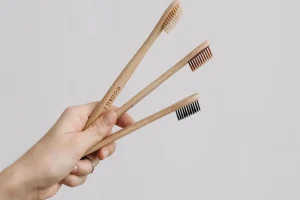Low Volume Injection Molding: Affordable Solutions For Small Batches

Low-volume injection molding services specialize in the production of parts of plastic material in volumes generally ranging from 100 to 10,000 units. They are the solution between prototyping and mass production. Compared to traditional high-volume molding, which needs highly expensive steel molds for million+ part runs, parallel low-volume services use cost-effective tooling to make small batch production reasonable.
Serviceable industries include medical device developers using the platform to test new equipment, Automotive Suppliers Validating Component Designs, and Consumer Product Companies for pilot market releases. Aircraft manufacturers also use these services for flight test hardware and ground support equipment.
Advantages of Low-Volume Injection Molding
The primary advantage of low volume injection molding services lies in dramatically lower upfront costs. Where a production-grade steel mold might cost 50,000+, an aluminum mold for low-volume runs typically ranges from $ 3,000 to $15,000. This enables businesses to:
Accelerate Time-to-Market
- Receive first articles in 2-4 weeks vs. 12+ weeks for high-volume tooling
- Conduct market testing with real molded parts (not just 3D printed prototypes)
- Make design tweaks based on actual performance data
Maintain Production Flexibility
- Easily modify molds for design iterations
- Test multiple material options before final selection
- Adjust production quantities based on demand
Reduce Financial Risk
- Avoid large capital investments before product validation
- Eliminate excess inventory of unused parts
- Scale production precisely to market needs
When to Choose Low Volume Injection Molding
Smart applications of low-volume molding include:
Market Validation & Pilot Runs
Produce 500-2000 units to test what customers think of it before spending a lot of money on high-volume tooling. A company that manufactures sporting goods employed this approach to test three bands of colors in a new water bottle design, saving $80,000 as it found the best-selling option versus mass production.
Bridge Production
Maintain supply to allow for production mold completion. A medical device manufacturer, instead of experiencing 8 weeks of downtime, which would have occurred if it had used its steel molds to produce 5000 emergency replacement parts, managed to produce 5000 emergency replacement parts by using aluminum tooling.
Legacy & Replacement Parts
Efficient production of small batches of obsolete components. Industrial equipment supplier profitable in manufacturing 200-300 units a year of 20-year-old machine parts by original aluminum molds.
Limited Edition Products
Offer seasonal or special-run products without long-term capital investment in tooling. A company making consumer electronics creates holiday-colored accessories in lots of 1K-3K pcs using the same aluminum mold for 5+ years.
Mold Types for Low Volume Production
Aluminum molds have attained industry normality for injection low-volume molding, providing an excellent tradeoff of cost efficiency and functional toughness. Such molds are much more economical than steel tooling; they cost 40-60% less while still performing reliably for 5,000-10,000 cycles. Aluminium’s high thermal conductivity enables it to run with much shorter cycle times than steel, where gains in production are often 20-30%.
3D printed molds offer an innovative solution for projects with ultra-low volumes or where the prototyping happens at extremely rapid speeds. Such molds, made from high-temperature resins or metal-infused materials, will take only 24-48 hours for less than $1,000 to be created, making them optimal for quantities of products below 500 pieces. Although restricted to lower-pressure uses and fewer lifetimes between 50 and 300 shots, they offer unrivalled speed for the first testing. A medical device startup seized this opportunity and created 300 biocompatible test components with printed molds while they wait for their aluminum production-grade tooling to arrive. The product received critical validation early, before its development timeline was stalled.
Soft tools such as silicone and composite molds provide exclusive applications for special purposes. Such flexible solutions provide quick mold modifications that take hours instead of days, and are inherently flexible in enabling easier demolding of complex undercuts on parts. The automobile industry has been a major beneficiary of this technology. One of the suppliers saved 60% in cost when they produced 1500 vibration-damping gaskets using composite tooling instead of traditional methods. Such an approach came in handy, especially for those components that use low-pressure materials such as urethanes and silicones, and standard metal molds would have been expensive, thus not needed.
How to Select a Low Volume Injection Molding Partner
Picking the right manufacturing partner is a process that involves a critical review of some key capabilities. Suppliers with their in-house tool making can provide quicker turnaround and superior quality control compared to suppliers who outsource molding. Material expertise is also vital, especially for projects requiring specific resins or industry regulations. More value is added when suppliers provide secondary services such as painting, assembly, and packaging, among other services, in the production line, which can simplify the whole production. Quality systems should at least comply with ISO 9001, with industry-dependent certifications such as ISO 13485 for medical devices or IATF 16949 for automotive applications, as may be applicable.
Future clients should set up an elaborate list of questions to evaluate potential suppliers well. Important questions should include average lead times for aluminum tooling, processes involved in certifying materials, and steps to take in case of alterations to the design during production. The knowledge of a supplier’s maximum shot size and clamp tonnage guarantees that their ability to meet a project’s present and future needs is met. At the same time, their method of design-for-manufacturability feedback should affect project success to a large degree. The practice of quality documentation, the storage of molds between runs, and the changeovers for material swaps gives insight into the characteristics of the operability and reliability of a supplier.
One should be cautious about several warning signs when choosing partners. Refusal of suppliers to share files of mold design or proper documentation can mean that their processes are not transparent. An overly overexpectant schedule or budget always results in unfavorable outcomes, whereas ambiguous communication about tool ownership can cause troubles during production breaks or design changes. Most importantly, the lack of process validation documentation implies possible quality control problems that might undermine project success. Thoughtful screening based on these principles can point to partners that can provide consistent quality while preserving the inherent flexibilities of a low-volume production.








